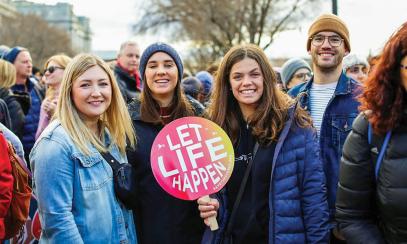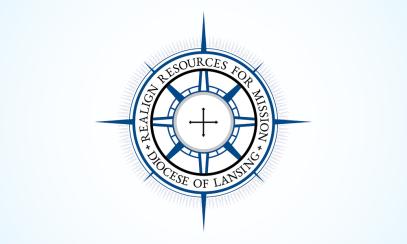Father Solanus Casey to be beatified in Detroit
Beatification ceremony
On Nov. 18, 2017, at Ford Field, a ceremony celebrating the beatification of Blessed Solanus will take place in the city where his healing and comfort touched the lives of many. Here, the people of Detroit will get a chance to celebrate the man who lived a humble yet remarkable life, full of concern for those in need.
Click here for tickets and more information
“I have two loves: the sick and the poor”
Opening doors to the hungry
One day in 1929, during the Great Depression, the poverty-stricken residents of Detroit began lining up outside St. Bonaventure Monastery – hungry and desperate. Father Solanus Casey, a Capuchin priest at the monastery, answered their call for help, telling the other friars, “They are hungry; get them some soup and sandwiches.” That day, the hungry and poor of Detroit felt comfort for the first time in months thanks to Father Solanus Casey, a beloved figure in the city whose compassion knew no bounds.
Father Solanus Casey, who spent 22 years at St. Bonaventure Monastery in Detroit feeding the poor, praying for healing for the sick, and bringing a sense of peace and compassion to countless others, has met the requirements for beatification and will be named “blessed” in a Mass at Ford Field in Detroit on Nov. 18. The announcement comes 60 years after Father Solanus’ death. He is the second U.S.-born man to receive this title ─ the first from Michigan. Pope St. John Paul II declared Father Solanus to be “venerable” in 1995 and now, Pope Francis has determined the authenticity of a miracle that occurred through the intercession of Father Solanus. The next step is sainthood.
A legacy of healing
When Father Solanus arrived in Detroit in 1924, he was already known as a beloved doorkeeper from his 20-year ministry at monasteries in the New York City area. Throughout his many years of ministry in New York and Detroit, Father Solanus was greatly sought after as a counselor, and for his blessings of the sick. Many felt his blessing brought about a cure for their illness. All who came to him were consoled by his counsel and his serenity.
Father Solanus died in Detroit in 1957. During his life and after his death, Father Solanus was known for his healing touch, and for the power of his intercessory prayers. Because of this, Father Gerald Walker, Provincial Minister of the Detroit Capuchins, initiated the first step to sainthood for Solanus after his death: he sent a report detailing Father Solanus’ life to the General Superiors in Rome. In 1995, he was declared “Venerable” by Pope John Paul II. In May of this year, 22 years later, Pope Francis issued a decree confirming a miracle as a result of Venerable Solanus’ intercession, announcing the plan for his beatification in November. The miracle involved the healing of a woman with an incurable genetic skin disease who, after visiting Father Casey’s tomb to pray for herself and others, saw an instant, visible improvement of her skin. T
In 2014, FAITH Magazine featured a student from Detroit named Jonah Kemp, whose cure is being considered a miracle for the canonization of Father Solanus (faithdigital.org/faithmag/FM1014-teen/).
Timeline
Jan. 1897: Bernard Francis Casey invested as Capuchin Novice Francis Solanus
July 1904: Solanus ordained a priest at St. Francis Church in Milwaukee
Aug 1904: Father Solanus sent on his first assignment to Sacred Heart Friary in Yonkers, New York
Aug. 1924: Father Solanus transferred to St. Bonaventure in Detroit
July 1957: Father Solanus gives his soul to God at St. John Hospital in Detroit
July 1995: Father Solanus declared Venerable by Pope John Paul II
May 2017: Miracle attributed to Father Solanus’ intercession affirmed by Pope Francis
Nov. 18, 2017: Ceremony to celebrate the beatification of Venerable Solanus Casey at Ford Field
Statement from Allen H. Vigneron, Archbishop of Detroit
“The beatification of Father Solanus will be a tremendous blessing for the whole community of southeast Michigan. He is an inspiration to all us Catholics – and to all – of the power of grace to transform one’s life.”
Steps to Sainthood
In official Church procedures, there are three steps to sainthood: a candidate becomes “Venerable,” then “Blessed” and then “Saint.” Venerable is the title given to a deceased person recognized formally by the pope as having lived heroic virtues. To be beatified and recognized as a Blessed, one miracle acquired through the candidate’s intercession is required in addition to recognition of heroic virtue or martyrdom. Canonization requires a second miracle after beatification, though a pope may waive these requirements.
The definition of a “miracle” is an event that can be witnessed by the senses but is in apparent contradiction to the laws of nature. The Church recognizes authentic miracles as a divine intervention in the sensible world.
– U.S. Conference of Catholic Bishops’ Backgrounder on “Making Saints.”
Did you know?
- So far, there are only three American-born saints: St. Elizabeth Ann Seton, St. Kateri Tekakwitha and St. Katharine Drexel.
- Father Solanus Casey is only the second American-born male to receive the title of “Blessed.”
Quotes
“Gratitude is the first sign of a thinking rational creature.”
“We must be faithful to the present moment or we will frustrate the plan of God for our lives.”
“Let us thank God for the privilege of being made to resemble his Divine Majesty.”
“I have two loves: the sick and the poor”
More Background on Father Solanus Casey
Difficult path to religious life
Born Bernard Francis Casey to Irish immigrants on Nov. 25, 1870 on a farm in Wisconsin, Bernard was the sixth child in a family of 16. As a young boy, he felt the Holy Spirit within him during his First Holy Communion, and often wondered if he could ever be a priest when he attended midnight Masses growing up. This feeling continued to strengthen as he got older, and at age 21, he started at St. Francis High School Seminary in Milwaukee to study for the diocesan priesthood. While in school, Bernard enjoyed his studies, but he faced difficulty in class because the lessons were in German – a language he didn’t speak and struggled to understand. Because of this, his supervisors suggested that perhaps the priesthood wasn’t for him, and that he go into a religious order instead. This set Father Solanus on a path of discernment during the summer and fall of 1896. He wrote to the Jesuits, Franciscans and Capuchins, and eventually felt the Blessed Mother told him to go to the Capuchins, who were headquartered in Detroit.
A new, simple life
In Detroit, Bernard was given the name of Friar Francis Solanus after his patron, St. Francis Solano. Because another Capuchin was named Francis, Bernard became referred to as “Solanus,” and in 1898, he took his Simple Profession of Vows in Detroit.
In the years following, Father Solanus continued his studies at St. Francis Monastery in Milwaukee and took his Solemn Profession vows with his class. His abilities still worried his superiors, however, so they ordained him as a “simplex priest” in 1904 (meaning he did not have the ability to hear confessions or preach doctrinal sermons). He was sent to New York, where his jobs included sacristan, director of the altar servers and doorkeeper (where he answered the bell at the monastery door). Father Solanus did not view any of these tasks as beneath him. Instead of resenting his superiors and their decision, Father Solanus simply deepened his ties with God, accepted his humble position and used his new role to help others.
Humility and piousness defined Father Solanus. At the monastery door, he became known as a healing and comforting figure, and a trusted and coveted counselor for the sick. He offered charity to everyone, which soon became a hallmark of his ministry.
At home in Detroit
Father Solanus returned to the Detroit in 1924, where he would stay for the next 22 years. By this point, he had become a well-known beloved figure – especially to the poor and the sick. To these souls, he was always available and always ready to lend an ear. The Capuchin Soup Kitchen in Detroit, which he helped to establish, has served Detroit ever since. The kitchen still serves thousands of meals each month, and donates food and toys throughout the region. Father Solanus died in Detroit in 1957 after a long illness. His legacy of strengthening souls in need, however, lived on in the community, even decades after his death.



